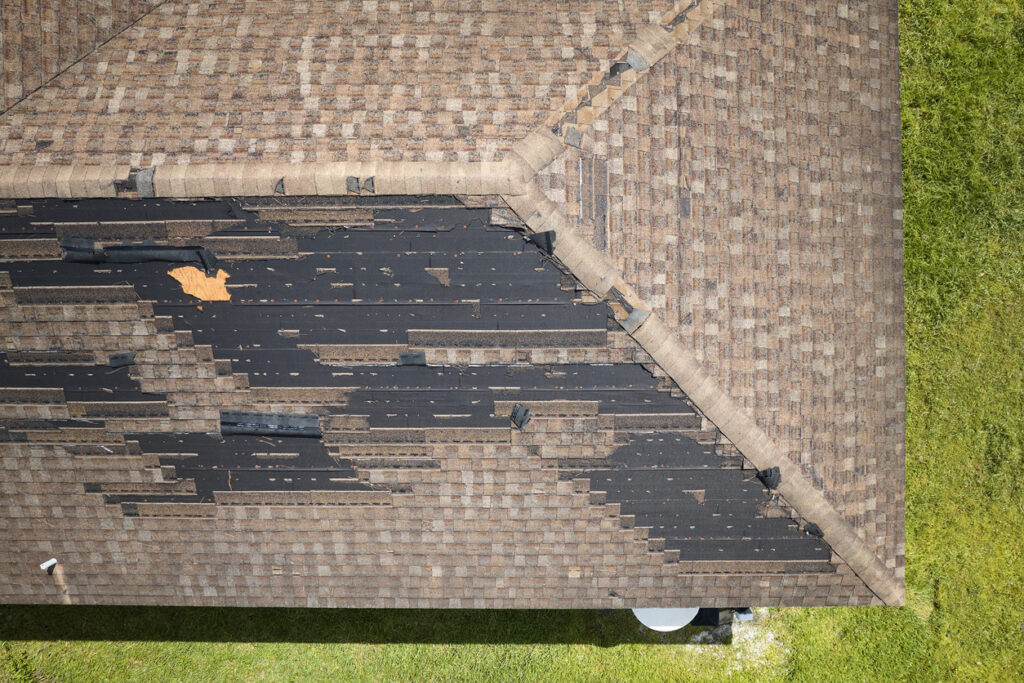How Much Wind Can a Roof Withstand

Homes, particularly those in areas prone to strong winds and storms, face a constant battle against nature. From high winds to raging storms, our roofs serve as the first line of defense, protecting us from nature’s wrath. As homeowners, we often take this shield for granted, rarely pondering the question, “How much wind can a roof withstand?”. In this article, we will look into the important aspects of assessing your roof’s resilience during strong winds, discover some roof facts, and learn how to prevent wind damage. We will also understand the roofing materials, and make informed choices about roof type composition.
How Much Wind Can a Roof Withstand: Assessing Your Roof's Resilience
When it involves our roofs, resilience is the name of the game. A sturdy roof not only shields us from the weather but also stands with us against the forces of nature. Understanding the factors affecting your roof’s wind resistance is the first step in ensuring its balance. A roof’s structural integrity plays an important part in its ability to resist strong winds. We recommend regular inspections to assess the condition of your roof. These inspections should encompass a test for free or broken shingles, weakened roof decking, and stable flashing around roof openings. If your region is at risk of high winds, consider investing in roofing materials with more suitable wind resistance.
Additionally, it’s crucial to familiarize yourself with your region’s typical wind patterns and strengths. Local meteorological data can provide valuable insights into what your roof might face during a storm. With this information, you can reinforce your roof and minimize potential damage.
Wind Damage on Roof: Identifying and Preventing Issues
Wind damage on roofs can occur in various ways. It’s important to recognize these signs promptly. Missing or lifted shingles, damaged gutters, and loose flashing are common indicators of wind damage. If you notice any of these signs, take action promptly to prevent further harm.
Preventive measures play a significant role in strengthening your roof’s resilience to wind. Proper roof maintenance, including regular cleaning of debris and gutter clearing, is vital. Ensuring that roofing materials are fastened securely can also help prevent wind-related issues.
Remember that preventive measures alone may not suffice. When severe storms are forecasted, consider taking extra precautions, such as securing loose objects around your property and trimming overhanging branches that could damage your roof.
Roof Facts: Understanding Wind Resistance in Roofing Materials
Roofing materials are a critical factor in determining a roof’s wind resistance. Different materials offer varying levels of wind resistance, and understanding these nuances is essential for homeowners.
Asphalt shingles, known for their affordability and versatility, are commonly used in roofing. However, their wind resistance can vary. Higher-quality asphalt shingles are made to withstand strong winds, but it’s essential to ensure proper installation. Metal roofing, on the other hand, boasts excellent wind resistance due to its durability and secure fastening. It’s less likely to lift or suffer damage during storms.
Roof Type Composition and Wind Resistance: Making the Right Choice
When it comes to roofs, one size doesn’t fit all. The type of roof composition you choose should align with your region’s wind conditions. Different roof types offer varying degrees of wind resistance, and selecting the right one is crucial.
Gable roofs, characterized by their triangular shape, are popular and offer good wind resistance. However, they are more susceptible to wind uplift due to their design. Proper construction and secure fastening are essential for gable roofs in windy areas. Hip roofs, with all sides sloping down to the walls, are known for their excellent wind resistance. Their aerodynamic shape allows wind to flow over them more smoothly, reducing the risk of uplift. Flat roofs, while modern and stylish, are less wind-resistant due to their design. They can be reinforced, but homeowners in windy areas should carefully consider this option.
A Solid Roof, A Secure Home
By assessing your roof’s resilience, preventing wind damage, understanding roofing materials, and making informed choices about roof type composition, you empower yourself to weather the fiercest of storms. Your home deserves the best protection, and your roof is its guardian. Ensure it stands against the howling winds and pounding rain, for your home finds its shelter in its strength.
If you would like for one of our professionals to evaluate your roof, contact Odyssey Home Remodeling. Our team works in the Illinois, Wisconsin, and Indiana areas and understands the weather patterns in our area. We would love to help you prepare your home for all of the challenges that our weather can bring. Contact us today.


